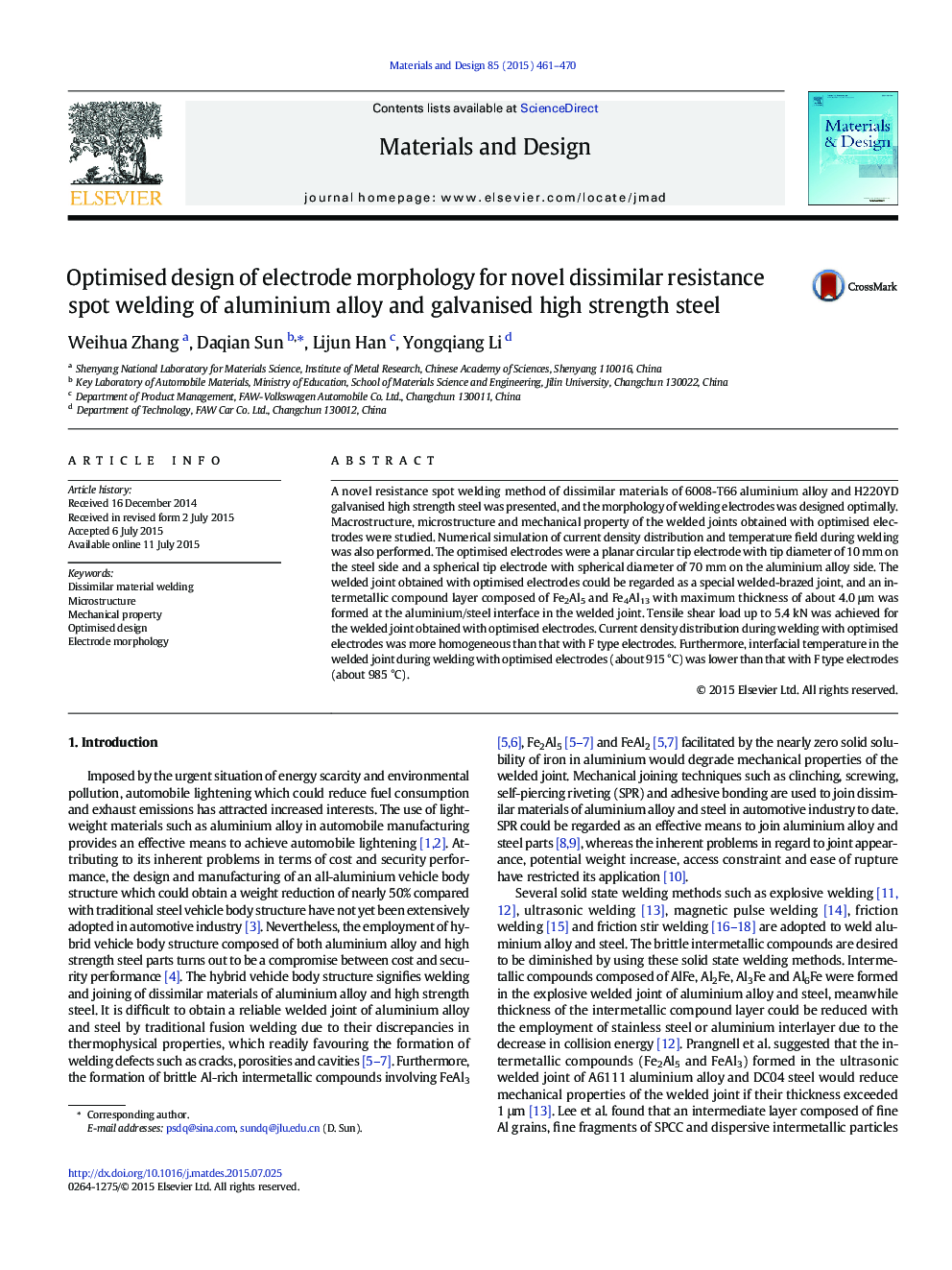| کد مقاله | کد نشریه | سال انتشار | مقاله انگلیسی | نسخه تمام متن |
|---|---|---|---|---|
| 828318 | 1470297 | 2015 | 10 صفحه PDF | دانلود رایگان |
• A novel resistance spot welding method developed for joining aluminium alloy and steel uses optimal electrode design.
• Thickness of intermetallic compound layer did not exceed 4.0 μm.
A novel resistance spot welding method of dissimilar materials of 6008-T66 aluminium alloy and H220YD galvanised high strength steel was presented, and the morphology of welding electrodes was designed optimally. Macrostructure, microstructure and mechanical property of the welded joints obtained with optimised electrodes were studied. Numerical simulation of current density distribution and temperature field during welding was also performed. The optimised electrodes were a planar circular tip electrode with tip diameter of 10 mm on the steel side and a spherical tip electrode with spherical diameter of 70 mm on the aluminium alloy side. The welded joint obtained with optimised electrodes could be regarded as a special welded-brazed joint, and an intermetallic compound layer composed of Fe2Al5 and Fe4Al13 with maximum thickness of about 4.0 μm was formed at the aluminium/steel interface in the welded joint. Tensile shear load up to 5.4 kN was achieved for the welded joint obtained with optimised electrodes. Current density distribution during welding with optimised electrodes was more homogeneous than that with F type electrodes. Furthermore, interfacial temperature in the welded joint during welding with optimised electrodes (about 915 °C) was lower than that with F type electrodes (about 985 °C).
Figure optionsDownload as PowerPoint slide
Journal: Materials & Design - Volume 85, 15 November 2015, Pages 461–470
